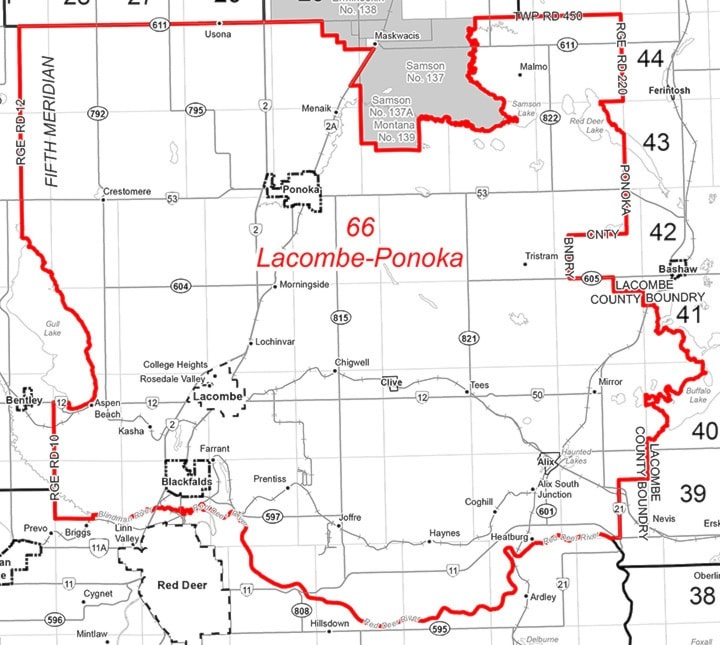A report commissioned last year to look into the province’s electoral boundaries has suggested some changes that would see some rural ridings being consolidated.
The Electoral Boundaries Commission released an interim report last week that recommends four ridings in the northeast part of the province fit into just three, five in northwestern Alberta made into four and reducing the seven Alberta ridings on the eastern edge to six.
To keep the Alberta legislature at 87 seats, three new ridings have been proposed. Both Edmonton and Calgary would get one additional each, while Airdrie would be split into two ridings with one of those to include Cochrane in its boundaries. There is a slight change being recommended for the Lacombe-Ponoka riding — with the small portion of the Maskwacis town site moved into the redrawn Wetaskiwin-Camrose riding to ensure all of Maskwacis is included in the same riding. There are a number of other ridings that will see either slight or major reshaping of their boundaries.
“Our interim report strikes a balance between population numbers and public interest,” explained Honourable Madam Justice Myra B. Bielby, commission chair and Albert Court of Appeal judge.
“I want to thank the hundreds of Albertans who participated in the review process to this point. The feedback was valuable and informed many of our recommendations. We look forward to receiving further input into our proposed boundary changes in the coming months.”
Justice Bielby along with commission members Laurie Livingstone, W. Bruce McLeod and D. Jean Munn agreed with the recommendations outlined in the report. The reasons for creating the new ridings was to recognize the significant growth above the provincial average in those areas and amalgamate areas that have seen lower populations.
However, one commission member, Gwen Day, wrote a dissenting opinion stating ridings in the cities be redrawn so as not to add any more ridings to those urban areas. It was noted that doing this would result in nearly all of the ridings in both cities being above the provincial average for population size, but below the 25 per cent maximum allowed under legislation.
In addition, the commission wants the two ridings in the far northwest to continue their special status, meaning the populations can fall between 25 and 50 per cent below the provincial average.
The public are invited to submit their feedback on the recommendations in person or through a written submission. The hearings will take place from July 17 to 21 in Grande Prairie, Vermilion, Edmonton, Calgary and Brooks.
To file a written submission or to find out more about the commission, its interim report and find maps of the suggested ridings, go to www.abebc.ca.
